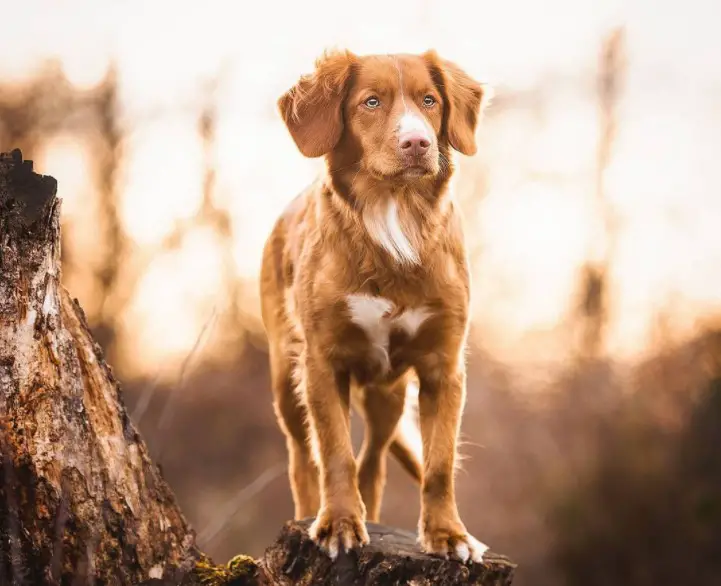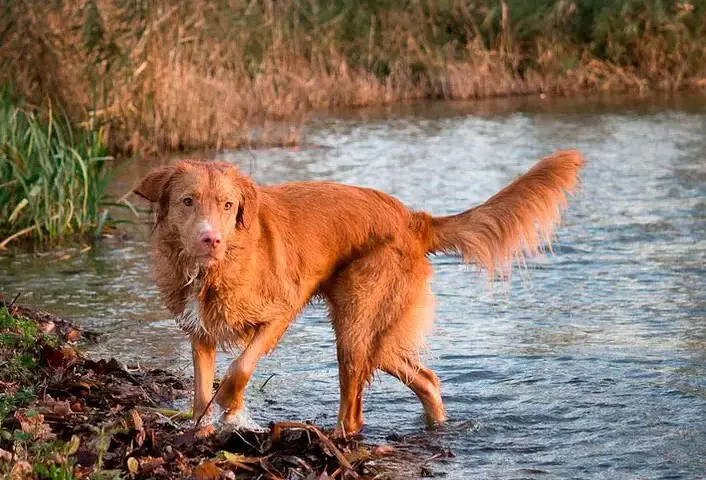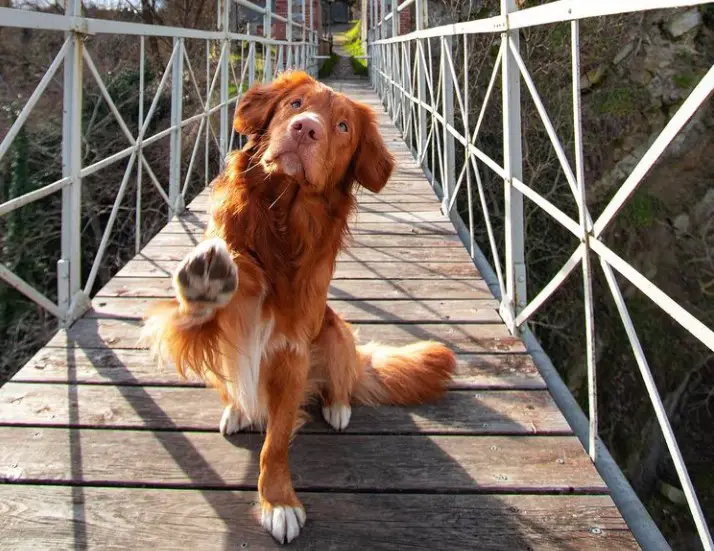The smallest of all Retrievers were bred in Canada. Interestingly, in addition to the ability to bring prey, dogs have a unique ability – to lure ducks. The official name of the breed is Duck Tolling Retriever. Dogs have proven themselves well as companions for active life and sports.
History of the Breed
As a breed, the Duck Tolling Retriever formed in the early 19th century at the Little River Harbor Community in Yarmouth, Nova Scotia, Canada. She was originally known in the country as the Little River Duck Dog or Yarmouth Toller.
The author of works on the history of Canadian dogs, dating back to the 18th century, Nicholas Denis, does not deny that small red Retrievers may have been introduced from the Old World to the Eastern Province of Canada. But it is also likely that the breed originated here in Nova Scotia from several other European breeds. The ancestors of the Tolling may have been Bretons, Golden Retrievers, Spaniels, Irish Setters, and Border Collies.
During the 17th and 19th centuries, Duck Tolling Retrievers were widespread on the East Coast of Canada. The breed was officially recognized by the Canadian Kennel Club in 1945. The Fédération Cynologique Internationale (FCI) recognized the breed in 1987.
Appearance
The Duck Tolling Retriever is an athletic, compact dog with a strong balanced constitution, medium bone, and well-developed muscles. Tolling is the smallest of all Retrievers. Height at withers – 43-53 cm, weight – 14-23 kg.
The head is proportional, wedge-shaped. The skull is wide, slightly rounded. The occipital protuberance and cheeks are flat. The distance from the back of the head to the stop is approximately equal to the distance from the stop to the nose. The stop is moderately pronounced. The muzzle tapers towards the nasal mirror, which can be black or brown to match the coat. The lips fit snugly against the jaws. The bite is dense, scissor bite. The jaws are strong, but the softness of the grip is important. The eyes are almond-shaped, set wide apart, of medium size. Iris color from amber to hazel. The eyelids are the same shade as the nose and lips. The ears are triangular in shape, rounded at the ends, of medium size, set high and curving at the base, falling on the muzzle.
The neck is set firmly, arched, without dewlap. The back is short and straight. Ribs well sprung, but not barrel-shaped or flat. The tail is set low, lower in a calm state, and during movement or arousal, it rises high above the back but does not touch it. The legs are straight, parallel with well-developed muscles, strong, provide the dog with an elastic, confident gait.
The coat is double, consists of a medium-length topcoat and a soft dense undercoat. The coat on the muzzle is thin and short. It is very important that the coat is water-repellent and that the dog can safely remove the bird from the icy water. Characteristic color: any shade of red. The color should be deeply saturated. White markings are allowed on the tip of the tail, paws, chest, and muzzle, their absence is not a fault.
Personality
The Duck Tolling Retriever is an amazingly versatile person. He is a talented hunter, agile enough, quick and obedient for agility, frisbee, and other sports, patient, and easily trained for obedience competitions. He is purposeful at work, energetic, cheerful. Likes to be in the spotlight. Ready to do everything to please the owner. He has one more feature. Duck Tolling Retrievers sometimes “scream” for joy or excitement. This sound is hard to convey in words, something between a squeak, howl, and growl. Duck Tolling Retriever has friendly relations with all family members. He gets along well with children of any age, tries to be careful and caring with babies, shows patience and sensitivity. Of all, the Duck Tolling Retriever usually singles out one, he strives to be the dog of one owner.
The territorial instinct is weakly expressed. The dog will not protect the owner and even more so his property, but will bark at passers-by and extraneous noises. He treats strangers with caution. They get along well with other pets, but being a hunter to the bone, can be too insistent in games, which is not always liked by cats and calmer dogs.
Care
Duck Tolling Retrievers maintenance includes regular brushing and bathing as needed. Domestic dogs are usually completely bathed with shampoo and conditioner every 1.5-2 months. It is important to avoid the formation of tangles, to regularly examine the ears and skin. The auricle is cleaned as needed. The claws, if they do not have time to grind, are cut to the optimal length about once every 3-4 weeks.
Exhibition grooming includes washing, drying, combing. A light haircut is allowed on the paws, behind the ears, on the chest, tail, and paws. It gives the appearance a neater appearance, but should not be excessive.
Health
The Duck Tolling Retriever is a strong, healthy dog, hardy, easily adaptable, rarely suffers from allergies or digestive problems, easily adapts to different climates and lifestyles. However, in the breed, there are hereditary diseases, which are important to know about the present and potential owners.
A list of diseases recommended for screening in all animals and obligatory for delivery in breeding individuals has been compiled. This will allow you to create a full-fledged base and correctly select breeding pairs. The list of inherited diseases of the Duck Tolling Retriever includes:
- Dysplasia of the hip joint;
- Progressive retinal atrophy;
- Thyroid problems;
- Diseases of the heart and blood vessels, including congenital defects;
- Malformations that include malocclusion, cleft palate, cleft lip, cryptorchidism, etc.;
- Degenerative myelopathy;
- Degenerative encephalopathy;
- Intervertebral disc disease;
- Liver shunt.
Life expectancy is usually 12-13 years. Retrievers need standard veterinary preventive measures (vaccination, treatment against external and internal parasites, annual medical examination).
